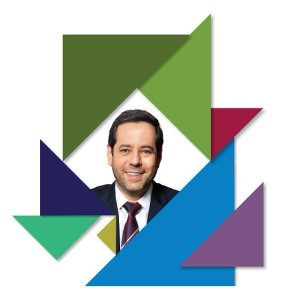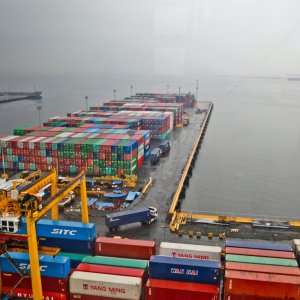Mature Product Growth to Grow the Market

STORY INLINE POST
Q: What have been the results of Pierre Fabre’s R&D investment in the last year in Mexico?
A: In past years and most thoroughly following the company’s Corporate Strategic Plan “Trajectorie” 2018, Pierre Fabre’s Toulouse R&D cluster reshaped its focus on oncology and clinical dermatology. This major change has impacted our operations by designing a leaner R&D structure, gaining efficiency and a positive turnover of capabilities and deliveries. That being said, Mexico and LATAM have significantly benefitted from novel drug introduction into the market place, such as JAVLOR® and Hemagiol®, indicated for bladder cancer and hemangioma patients respectively. Hemagiol® is under registration process before regulatory agencies in both Mexico and Brazil.
Pierre Fabre continues to build strong partnerships in the global oncology field due to its R&D and business development focus. LATAM with Brazil and Mexico in particular is a key region for the group as they will serve as main pillars for the success of this treatment in following years.
Q: How big is the opportunity in the oncology field in Mexico and what are the main drivers?
A: Chronic diseases will drive the demand and growth of new therapeutic alternatives, including high-specialty products. As the Mexican population ages healthcare services have to adapt and satisfy evolving needs. Considering private and public healthcare providers are equipped with a broader arsenal of techniques and diagnosis tools, cancer diagnoses are systemically increasing in number. These tools allow treatments to begin at initial stages leading to more favorable therapeutic outcomes. There has been a significant switch in resource allocation from acute diseases to chronic and degenerative conditions. For instance, the PrevenIMSS campaign and infrastructure development with the PrevenIMSS initiative is the clearest example of this.
Mexico’s life expectancy must also be taken into account, which is 75 years for males and 77 years for females. As such, this is the right time to develop strong capabilities in cancer treatments. Pierre Fabre has a strong commitment to continue delivering successful and novel therapeutic alternatives on the field.
Q: With what companies have you partnered up in Mexico and which partnerships are you looking for?
A: So far we have a three-year partnership with Janssen for a specific pool of their women’s health products, which we will continue in the future. We are partnering with Ferring Pharmaceuticals, securing the local license for Lysteda® in Mexico, indicated in heavy menstrual conditions. We are also in active negotiations with a robust Swiss company specializing in the oncology field. One of our company’s strategic imperatives relies on the continued search for co-promotion agreements, licenses, distribution channels and collaborations with other international pharmaceutical entities engaging in the oncology, woman’s health and orphan drug fields. Under these circumstances, multiple companies are knocking on our doors and exploring potential partnerships with us.
Q: What can be learned from Pierre Fabre’s different R&D and business development path?
A: Big pharmaceutical companies have bet their future on biotech and high-end technologies, which we consider a strategical mistake. This approach leaves behind mature products on low investment divestment with carry over capabilities, losing brand equity and critical mass.
Companies underestimated the difficulties that LATAM emerging countries like Mexico would have in terms of market access, restrictions and regulations. The public sector has significantly downsized its budget, swiftly moving to generic substitution. As such, the environment for new molecules is becoming uncertain as both private and public companies are undergoing severe budgetary constraints. Pierre Fabre is going against the current, completely trusting in its mature products. We decided to invest in their development while also securing co- promotion opportunities. This has been a successful strategy for us, allowing us to have an organic top line growth of 51 percent over the last four years.
Large pharmaceutical companies are often commanded and motivated by their global headquarters, which are not well acquainted with local trends. Although focusing on high-technology products and medical devices is understandable, Mexico’s access barriers are complex. Lacking a local partner to support an access strategy could easily result in failure. The pharmaceutical industry and its landscape has significantly changed since 2013, not only from a public perspective but also from a retail standpoint. For example, new players are constantly coming in while old ones exit the market. Strategies like the physicians at the point of sale have established themselves in Mexico, with close to 25,000 operating in the country.
Q: What is Mexico’s relevance for the company’s cosmetic and consumer products?
A: Growth will be fairly easy considering Pierre Fabre’s vast experience and expertise in the segment. We will do this not only by re-inventing our brand portfolio and their components but also by listening and understanding our consumers’ needs. Pierre Fabre has developed a consistent communication strategy to reach consumers through web channels and points of sale, such as Farmacias San Pablo and other department stores. Mexico is Pierre Fabre group’s main affiliate in a vast range of products and brands within the segment.
Q: What are your expectations for the dermocosmetic market in Mexico?
A: Pierre Fabre’s slogan reads “From Health to Beauty”. Covering both the health and beauty segments is truly a core element to the company’s mission. We are one of the few companies that has successfully serviced this broad spectrum.
The dermocosmetic market is extremely dynamic and continues to foster new emerging companies, products and strategic alliances. The dermocosmetic market is also switching toward an aesthetics approach. As a result, products and their combinations will have better therapeutic and cosmetic outcomes such as the combined use of the botulinum toxin and dermal fillers. This phenomenon is creating more awareness for end users, patients and consumers.
























